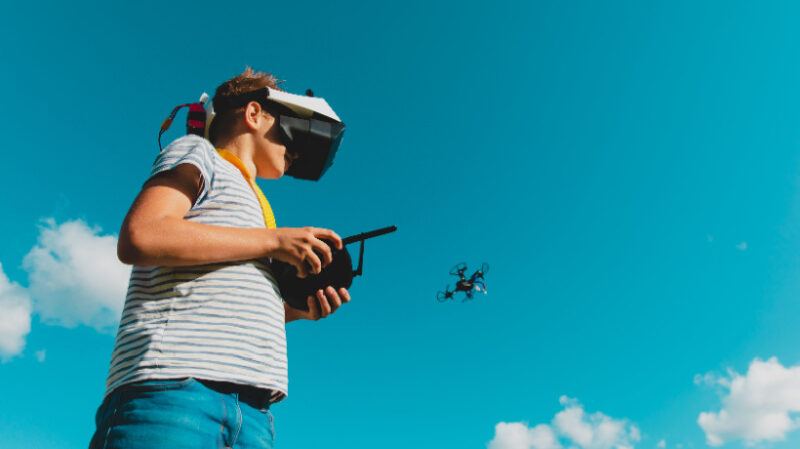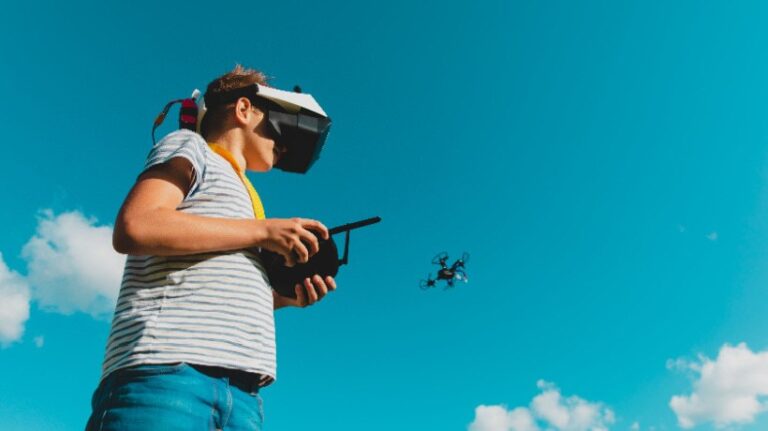
Can drones enhance digital education?
New digital tools and technologies constantly improve daily life in many ways. These changes have evolved education into a digital world, encouraging a more inclusive and flexible learning experience. However, digital education also poses new challenges. Fortunately, drones have become a growing tool to bridge the gap and solve the problems of online learning and distance learning. As the education industry moves from traditional classrooms to cloud-based platforms, effective solution setup is essential. If you want to know more about how drones can help you with digital education, this article is for you.
The rise of drones in education
Drones were originally made for military and recreational purposes. But over the years they have found a path to education and training. Currently, drones are used in several fields to teach a variety of subjects and skills. But why does it exactly gain traction from education? Well, drones are cost-effective, accessible, practical, and enrich immersive learning. Because of these benefits, primary schools and universities around the world are currently employing drones in remote learning.
How drones enhance digital learning
With advanced technology and a variety of customization options, drones are perfect for digital learning. So here are some ways drones are transforming digital education.
Immersive learning
Drones bring lessons to life by providing aerial visuals and interactive experiences. This increases student engagement and motivation to learn, and improves the quality of education. Remote Access
Drones simplify digital learning by providing real-world data to online platforms. Easily collect e-learning content and share it with students anytime, anywhere. Simulation and virtual training
Practical experiences make you the best teacher. Drone flight simulation via the eLearning module emulates real life for more impactful education. Content creation
You can also use drones for e-learning content. Drones enable video lessons and VR/AR integration, opening up many possibilities that traditional education is difficult.
Drone applications in different learning environments
Drones are very versatile and can be personalized to meet your specific educational needs. Discover how it can be applied in a variety of learning environments.
STEM education
Drones are used in STEM learning to teach physics, engineering and programming, enabling hands-on experiences. It also helps to collect, analyze and sample real data for STEM research.
Geography and Environmental Studies
Geography and the environment research is usually time consuming and tiring. However, drones can streamline mapping, investigation, and ecosystem surveillance. This can now be achieved with just one drone flight.
Occupational and Professional Training
Drones can also be used to learn about agriculture, oil and gas, and even construction. They can give students the practical skills and experience that are much needed for a professional career.
Corporate Training and Compliance
Drone inspection courses offered via eLearning are popular among businesses. This is to provide efficient training to prepare employees for corporate work while ensuring compliance through drone monitoring.
The benefits of integrating drones into e-learning
There are many benefits to using drones in e-learning. Learn more about what you can expect from a drone with online learning.
1. Improve learner engagement and retention
Drones stimulate interactivity that stimulates interest and participation among students. This engagement leads to stronger knowledge retention.
2. Practical skills development through virtual and real practices
The theory is great, but it’s also essential to know the application in a real scenario. Drones allow students to improve their skills through virtual and real-life practice and set up for future success.
3. Scalability
It’s very easy to scale with drones in remote learning, as you can train thousands through cloud-based drone modules. Only standardized systems that need occasional updates are required and will be set up for the future.
4. Accessibility
Drones make digital education faster and more effective by bringing real-world experiences to remote learners. This means students can receive quality education wherever they are.
Issues and limitations
While digital education has many applications and benefits, drones also have some challenges and limitations.
Drone equipment and software costs
Drones can be expensive to purchase and implement education. Proper training is also costly. So think about whether you have to make an expensive investment. Regulatory barriers in various regions
Legal concerns are a common challenge for drone operations. Make sure your drone is in compliance with laws and regulations. Technical challenges when integrating drones with LMS platforms
Some learning management systems (LMSS) may not be compatible with drones. Make sure to find an LMS that works with drones for online learning. Safety and privacy concerns
Drones and digital education can fall victim to hacking and cyberattacks. Establish a secure IT infrastructure to prevent safety and privacy issues.
Future trends: drones and e-learning
Digital education is expected to grow in the coming years, so the future is bright for drones and e-learning. Here are some trends you might see:
1. Drone-powered AR/VR classroom
Augmented reality (AR) and virtual reality (VR) are further developing along with drone technology. Classrooms could become a whole new world as drones and AR/VR work together to model real-world environments.
2. AI and drones for real-time learning analytics
A combination of both drones and AI can drive learning analytics to be completed faster and more accurately. This real-time processing provides instant database reporting and optimizes digital education.
3. Integration with Metaverse-based Education
Metaverse is expected to continue growing. It is not surprising if digital learning adopts metaverse-based education and exceeds the limits of time, place and physical resources.
4. Rise of Drone Certification Program, fully offered online and fully
Online transactions are already trending. Drone certification programs can also choose to combine theory with flight simulation to provide global access to drone education.
Case studies and real-world examples
Drones were first used in the education industry and have proven to have a significant impact on learning. For example, consider a case study conducted at Utah State University on the use of drones in landscape architectures. Improved student design accuracy and detail, increasing workflow efficiency.
Another study from Chiang Mai University in Thailand also showed the positive effects of drones in various educational fields. This includes device comfort, better understanding of learning materials, and mastery in using software. As drone technology becomes more advanced, it is also expected to offer more benefits and applications to digital education.
Start a digital education drone: Institutional procedures
Integrating drones into digital education can be challenging. To help with that, check out this step-by-step guide to make sure your institution is adopting drones correctly in digital education.
Step 1: Evaluate your learning goals
Start by evaluating your learning goals and ensuring that you follow smart standards. Ask the question why, what, and how. Why do drones need to be used for online learning? What do you want learners to achieve? How do you implement it? Defining learning goals guides decisions to achieve the desired outcome.
Step 2: Choose drone software/hardware compatible with eLearning
Finding the right drone service to integrate with your e-learning system is important. Think about drone elements such as cloud-based storage, real-time video sharing, compliance and licensing, and integration with LMSS.
Step 3: Train your educators and IT teams
Provide appropriate training to educators based on drone operations to ensure that drones can be operated safely and efficiently for remote learning. You also need to be qualified to provide IT teams who will be working in support and maintenance whenever necessary. Drone-based learning and IT teams without training fail.
Step 4: Pilot Project and Scale Up via Cloud LMS
Start with a small pilot test before full implementation. You can monitor and analyze the impact of drones on digital education and make the necessary adjustments.
Once the desired results are achieved, standardize new digital education systems and scale up using cloud-based LMS. This allows easy access to teachers and learners, when, wherever they are.
Conclusion
Drones enhance digital education by bridging classrooms and cloud learning. It offers several advantages and ensures streamlined online learning in many areas.
Continuous advances in drones could have made digital education even more immersive, accessible and skill-focused in the future. So, what are you waiting for? Now is the time to adopt drones as a core component of our digital education strategy.


